-
Welcome back Guest! Did you know you can mentor other members here at H-M? If not, please check out our Relaunch of Hobby Machinist Mentoring Program!
You are using an out of date browser. It may not display this or other websites correctly.
You should upgrade or use an alternative browser.
You should upgrade or use an alternative browser.
Bismuth--Yuch. My new worst favorite material to machine
- Thread starter Bill Kahn
- Start date
It has about the density of lead and last cost I had was $240 per pound. I have a little piece I will sell you so you can play with it. When the company bought it the material supplier only dealt with three metals, Tantalum, Columbium and I forget the third. It is supposed to be the most non reactive metal and we made a venturi and nozzle for a kiln. Machines like crap.
- Joined
- Feb 1, 2015
- Messages
- 9,994
Re the bismuth, I would make a mold from screwed together plate with the open side being 2" x 6" .and the depth slightly more than one inch. After pouring the cast, I would face mill the open face while still in the mold. The mold walls will provide support to help prevent break out of the edges. It would help to blacken the mold surfaces with a candle or acetylene flame to prevent bonding.
Done. See pictures. Dimensions came in pretty good—at least better than I normally do when actually trying to hit real dimensions with square and true. See how the 1-2-3 blocks just barely fit (should not have put them in as I think I caused some surface blemishes) And, sort of feels funny because this mold is designed to be sacrificial. It is about 10% too high. I plan to remelt the bismuth into it and fill it up. Then, machine off the top. Am hoping the aluminum sides prevent (or at least greatly reduces) the edge shatter. Regarding a release agent, I have been using the graphite spray shown. Easy to apply (like spray paint), drys in a minute, and has been working well. So, next step is to break up my Bi chunk (yeah, you can hit it hard, like dropping it from 4 feet on to concrete, and rather than denting (or bending) like all the other metals I know, it breaks into two pieces (and some small shards) But, the material does not feel like a ceramic, it is soft, like lead or tin. Funny huh?. Anyway, we’ll see how this all goes. Thanks for the suggestions. -Bill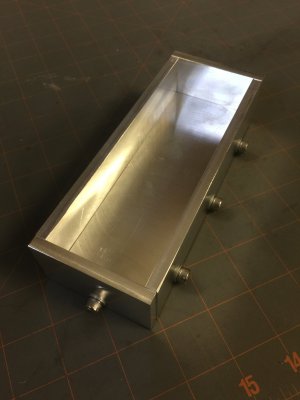
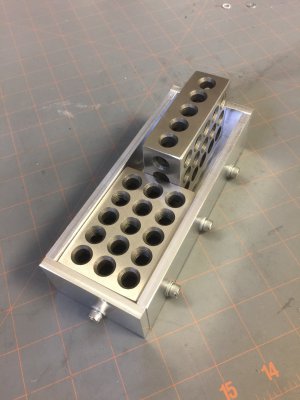
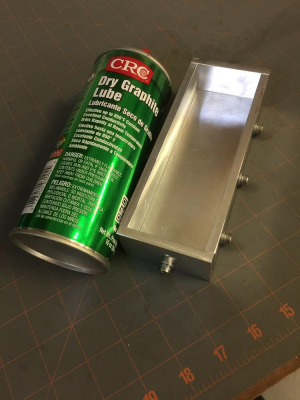



Much went well:
-Bill
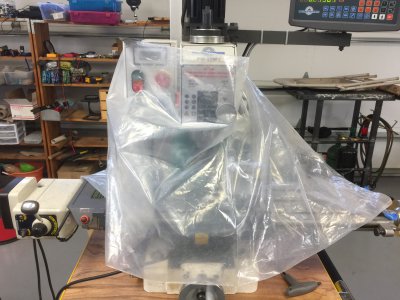
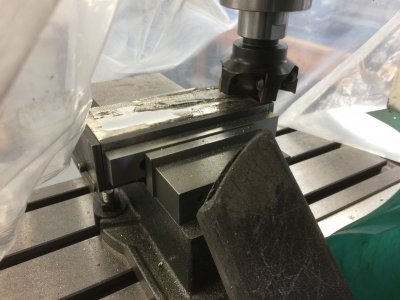
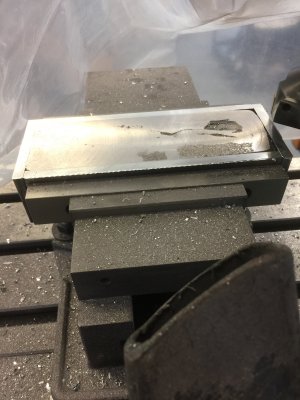
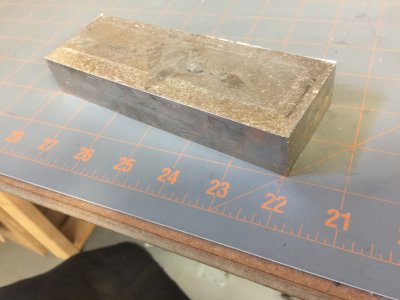
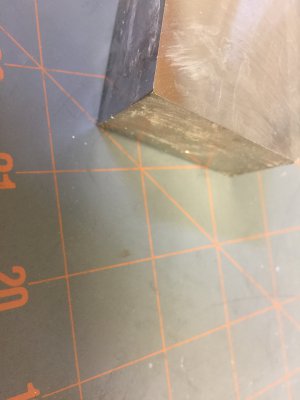
- The mold did not leak molten Bismuth. Small celebration.
- The big thing is the key idea did work--with the mold edges supporting, I could surface face with no edge shatter. That is great.
- I figured out a kludge system for managing the horrible Bismuth powder that clings to everything. Not only can you not vacuum it up, you can barely even brush it off. I set up a plastic hood around the cutting, with my shop vac running into it. Pretty much I only ended up powder coating the mill stuff. Much better than all over.
- The release agent worked well--the aluminum sides came right off.
- The 1x2x6 dimensions came in spot-on.
- The five mold surfaces are just plain ugly--nothing at all like a nice machined surface. I gotta think if the lousy surface finish is worse than chipped edges.
-Bill





- Joined
- Sep 5, 2013
- Messages
- 3,798
Well, it’s a great looking brick (bricksmuth?) that’s for sure! Wonder if you could sand the edges to get a finish you like better, or maybe it’s too soft? Just thinking wet/dry paper through a few grits and maybe frequent flushing with water might not chip out the corners like the milling did. Might throw the dimensions off more than you want though.
-frank
-frank
